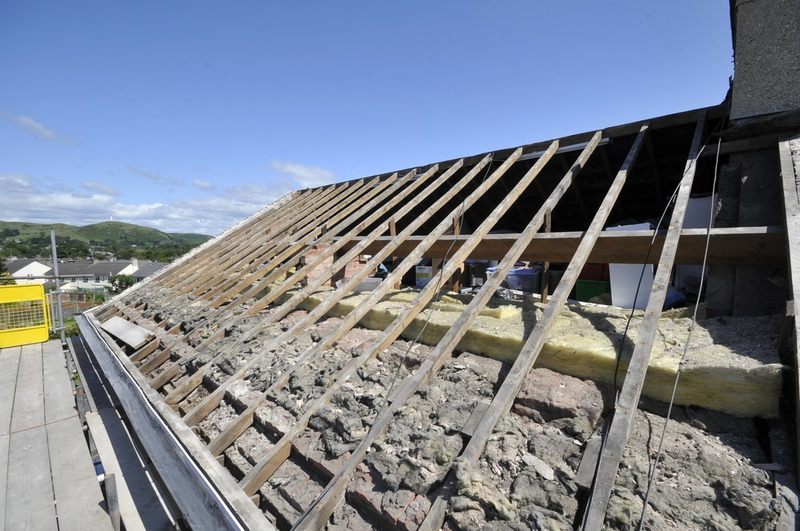
Foundation Requirements for Adding a Second Story: A Comprehensive Guide
Expanding your home by adding a second story can be an exciting endeavor, offering the opportunity to create more living space and increase property value. However, this significant undertaking requires careful planning and adherence to foundation requirements to ensure the structural integrity and safety of your home. In this comprehensive guide, we’ll explore the essential foundation requirements for adding a second story to your house, providing you with the knowledge needed for a successful and safe home expansion project.
1. Assessing the Feasibility of a Second Story Addition
Evaluating Existing Structure
Before proceeding with a second-story addition, it’s crucial to evaluate the current condition and structural integrity of your home. An existing structure should be in good condition and able to support the additional weight. Identifying any pre-existing issues, such as foundation cracks or structural deficiencies, is essential for planning and budgeting.
Consulting with Structural Engineers
Engaging a structural engineer is a critical step in assessing the feasibility of your project. They can evaluate the existing structure, determine if it can support the new load, and recommend any necessary modifications. Their expertise is invaluable in ensuring the safety and stability of your home.
Local Building Codes and Permits
Familiarize yourself with local building codes and permit requirements. Building codes vary by location and may dictate the type of foundation, structural reinforcements, and other specifications for your second story. Complying with these regulations is essential to avoid legal issues and ensure your project’s safety.
2. Foundation Types and Their Suitability
Crawlspace Foundations
Crawlspace foundations are a common choice for second story additions. They provide access to utilities and allow for ventilation but may require additional support and insulation. Properly designed and constructed, they can be a cost-effective option.
Slab Foundations
Slab foundations are a popular choice for single-story homes, but they can be adapted for second story additions. They are cost-efficient and require less excavation. However, they may not be suitable for areas with high water tables or expansive soils.
Full Basement Foundations
Full basement foundations offer ample space and potential for future expansion. They provide excellent stability but can be more expensive due to excavation and construction costs. Basements are a suitable choice if you need additional living or storage space.
Pier and Beam Foundations
Pier and beam foundations consist of elevated piers supporting the structure. They allow for ventilation and access to utilities. This type of foundation is particularly suitable for areas prone to flooding or soil instability. Properly designed, they can support a second story effectively.
3. Foundation Reinforcement and Strengthening
Load-Bearing Walls and Beams
Reinforcing load-bearing walls and beams is essential when adding a second story. Structural engineers can design solutions like adding steel beams or laminated veneer lumber (LVL) to distribute the added weight properly.
Reinforced Footings
Ensuring that your foundation’s footings can support the increased load is critical. Reinforced concrete footings or additional piers may be necessary to enhance stability and prevent settling or shifting.
Bracing and Support Systems
Installing bracing and support systems, such as shear walls and cross-bracing, can strengthen the existing structure. These measures help mitigate the risk of structural failure during and after the second-story addition.
4. Ensuring Proper Foundation Drainage
Managing Water Infiltration
Effective drainage is crucial to prevent water infiltration and moisture-related issues. Proper grading, gutter systems, and downspouts should direct water away from the foundation to avoid erosion and potential damage.
French Drains and Sump Pumps
In areas prone to heavy rainfall or high water tables, installing French drains and sump pumps can help manage excess water. These systems redirect groundwater and protect the foundation from hydrostatic pressure.
Waterproofing Membranes
Applying waterproofing membranes to the foundation walls can provide an additional layer of protection against water intrusion. This preventive measure can safeguard your home against moisture-related problems.
5. Foundation Inspections and Maintenance
Pre-Construction Inspections
Before commencing the second story addition, conduct a thorough inspection of the existing foundation. Identify and address any structural issues, cracks, or damage. Proper pre-construction preparations are key to a successful project.
Regular Maintenance
Regularly inspect and maintain your foundation even after the second story addition is completed. Address any signs of settling, cracking, or water damage promptly to prevent further issues.
Post-Construction Inspections
After the project is finished, schedule post-construction inspections to ensure that the foundation and structural modifications meet safety and code requirements. These inspections provide peace of mind and confirm the project’s integrity.
6. Hiring Professionals and Contractors
Architectural and Structural Engineers
Engaging architectural and structural engineers is essential for the design and assessment of your second story addition. Their expertise ensures that your project complies with safety and engineering standards.
Foundation Specialists
Foundation specialists are skilled in evaluating, repairing, and reinforcing foundations. They play a crucial role in the success of your project, ensuring that your existing foundation can support the new load.
General Contractors
Experienced general contractors oversee the entire project, from design to construction. They coordinate subcontractors, manage timelines, and ensure that all aspects of your second story addition align with your vision and comply with regulations.
7. Cost Estimations and Budgeting
Foundation Costs
Foundation costs can vary significantly depending on the type of foundation, necessary reinforcements, and local labor and material prices. Obtain detailed quotes from contractors and factor in potential unforeseen expenses.
Overall Project Budgeting
In addition to foundation costs, consider the overall budget for your second story addition. Include expenses such as architectural and engineering fees, permits, construction materials, labor, and interior finishes.
Contingency Planning
Allocate a contingency fund to account for unexpected expenses that may arise during the project. It’s wise to set aside 10-15% of your total budget for contingencies to mitigate financial surprises.
8. Common Pitfalls and Challenges
Overlooking Structural Integrity
Neglecting the structural integrity of your existing foundation can lead to costly issues down the road. Invest in a thorough assessment and reinforcement if necessary.
Ignoring Building Codes
Failure to comply with local building codes and permit requirements can result in legal complications and delays. Always ensure your project adheres to regulations.
Budget Overruns and Delays
Unforeseen issues or changes in project scope can lead to budget overruns and delays. Adequate planning, a well-defined scope, and a contingency fund can help mitigate these challenges.
FAQs: Your Second Story Foundation Questions Answered
1. What factors should I consider before deciding to add a second story?
- Evaluate your existing structure’s condition.
- Consult with structural engineers.
- Be aware of local building codes and permit requirements.
2. Can I use my existing foundation for the second story?
- It depends on your existing foundation’s condition and load-bearing capacity.
- Consult with a structural engineer to assess its suitability.
3. What are the different foundation types and their pros and cons?
- Crawlspace, slab, full basement, and pier and beam foundations each have their advantages and disadvantages.
4. How do I reinforce my foundation to support the additional weight?
- Reinforce load-bearing walls and beams.
- Strengthen footings and install support systems.
5. What is the role of proper drainage in second story foundations?
- Proper drainage prevents water infiltration and moisture-related issues.
- Manage water with grading, gutter systems, and drainage solutions.
6. Do I need permits and inspections for a second story addition?
- Yes, permits and inspections are typically required to ensure compliance with local building codes and safety standards.
7. How can I find reliable professionals for my project?
- Seek recommendations from trusted sources.
- Verify credentials and check references.
- Interview multiple professionals before making a selection.
8. What is the typical cost range for adding a second story with a new foundation?
- Costs vary based on location, foundation type, and project scope.
- Obtain detailed quotes from contractors to estimate the cost accurately.
9. What are the most common challenges homeowners face during this process?
- Overlooking structural integrity.
- Ignoring building codes and permits.
- Budget overruns and project delays.
10. How long does it take to complete a second story addition, including foundation work?
- Project timelines vary based on factors such as scope, weather, and permits.
- Discuss a realistic timeline with your contractor and factor in potential delays.
Conclusion
Adding a second story to your home is a substantial investment that can significantly enhance your living space and property value. However, it’s crucial to prioritize the foundation requirements outlined in this guide to ensure the safety and structural integrity of your project. By carefully assessing your existing structure, choosing the appropriate foundation type, reinforcing as needed, and addressing drainage and maintenance, you can embark on a successful second story addition journey. Always consult with experienced professionals and adhere to local regulations to make your vision of an expanded, multi-story home a reality.


